Are you craving that perfect morning pick-me-up? You’re not alone. Millions of coffee lovers turn to cappuccinos for their daily caffeine fix.
But does a cappuccino pack the punch you’re looking for? We’ll spill the beans on this beloved Italian brew.
In this post, we’ll reveal the truth about caffeine in cappuccinos.
You’ll discover exactly how much caffeine you’re sipping and how it compares to other coffee drinks.
We’ll also explain the factors influencing caffeine content and share tips for customizing your cappuccino experience.
Ready to become a cappuccino connoisseur? Let’s dive into this classic coffee creation’s creamy, caffeinated world.
Does Cappuccino Contain Caffeine?
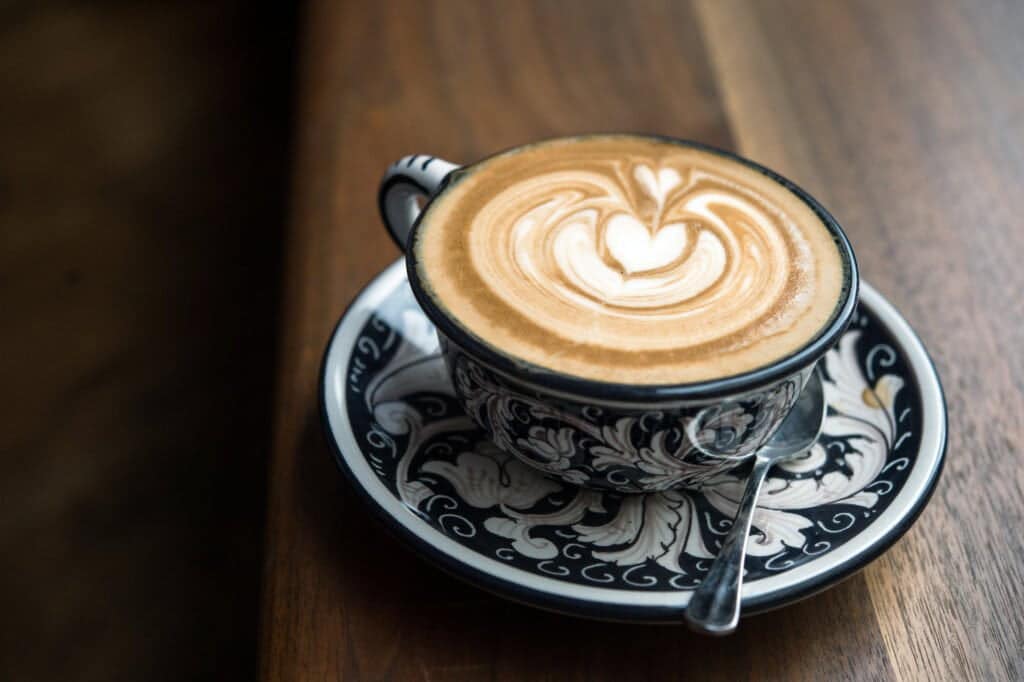
Yes, traditional cappuccinos do contain caffeine.
The caffeine in a cappuccino comes primarily from its espresso base, a concentrated form of coffee. A standard eight fl oz cappuccino typically contains around 86.4 mg of caffeine.
This caffeine content is important to understand, especially for those sensitive to caffeine or monitoring their intake.
Whether you’re looking for a morning energy boost or limiting your caffeine consumption, knowing that cappuccinos contain caffeine helps you make informed choices about your coffee habits.
Factors Influencing Caffeine Content in Cappuccino
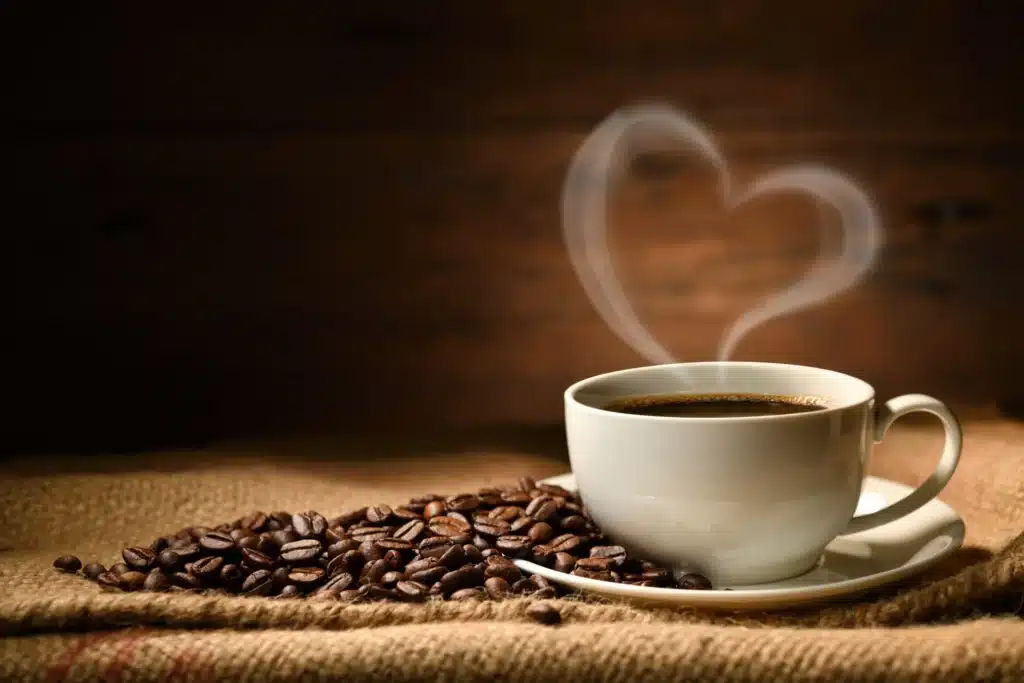
Several factors can affect the amount of caffeine in your cappuccino. Let’s break them down:
1. Espresso Shots
The number and size of espresso shots play a big role in your cappuccino’s caffeine content.
A single shot typically contains about 40-64 mg of caffeine, while a double shot can pack twice that amount. You increase your caffeine intake by ordering a larger cappuccino or asking for an extra shot.
This flexibility allows you to control caffeine consumption based on your preferences or needs.
2. Coffee Beans
The type of coffee bean used in your cappuccino matters, too.
Arabica beans, which are commonly used, contain about 1.5% caffeine. Robusta beans, on the other hand, have nearly double that amount at around 2.7%.
This explains why some cappuccinos, even if they’re the same size, might give you more buzz than others.
3. Brewing Method
How the espresso is brewed affects caffeine extraction. Longer extraction times can lead to higher caffeine concentrations.
The pressure and temperature during brewing also play a part – higher pressure and optimal temperature can maximize caffeine extraction.
These factors contribute to the unique caffeine profile of each cappuccino.
4. Milk and Foam
The amount of milk and foam in your cappuccino can dilute the caffeine concentration.
A wet cappuccino with more milk might feel less intense than a dry cappuccino with more foam, even though they contain the same amount of espresso.
This balance affects not only the taste and texture of your drink but also how strong the caffeine kick feels.
Caffeine Content in Different Cappuccino Variants
1. Wet Cappuccino
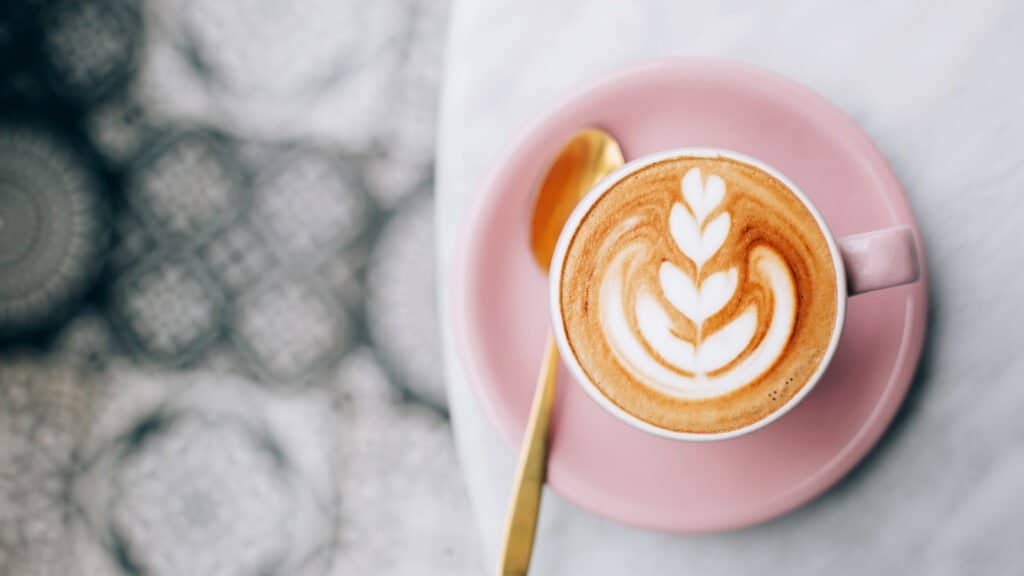
A wet cappuccino contains more steamed milk and less foam than a traditional cappuccino.
This results in a creamier, smoother texture that some coffee lovers prefer.
Wet cappuccinos are perfect for those who enjoy a milder coffee flavor but still want the full caffeine kick.
- Caffeine Content: Approximately 80 mg per standard serving.
2. Dry Cappuccino
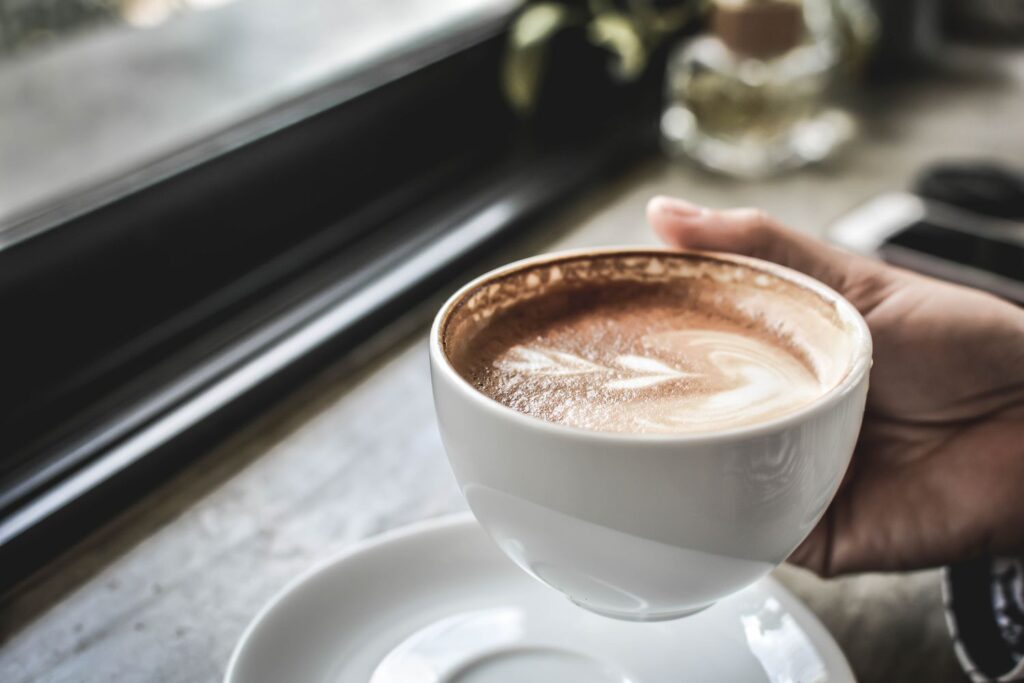
On the other hand, a dry cappuccino features more foam and less steamed milk. This creates a lighter texture with a more pronounced espresso flavor.
Dry cappuccinos are ideal for coffee enthusiasts who prefer a stronger coffee taste and a frothy texture.
- Caffeine Content: Approximately 80 mg per standard serving.
3. Flavored Cappuccino
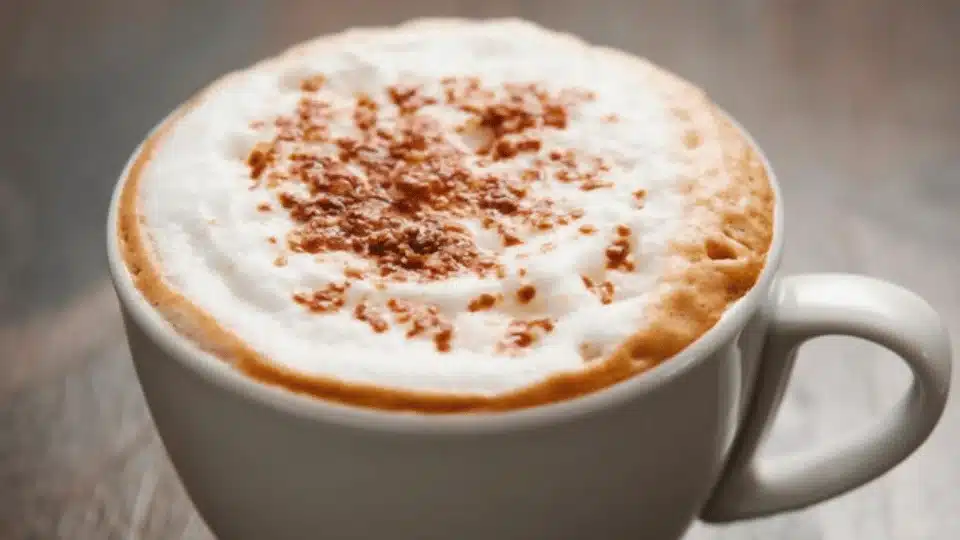
Adding flavored syrups to your cappuccino doesn’t affect its caffeine content.
Popular flavors like vanilla, caramel, and hazelnut enhance the taste without altering the base espresso.
This variant is great for those who want to experiment with different flavors without changing their caffeine intake.
- Caffeine Content: Approximately 80 mg per standard serving.
4. Iced Cappuccino
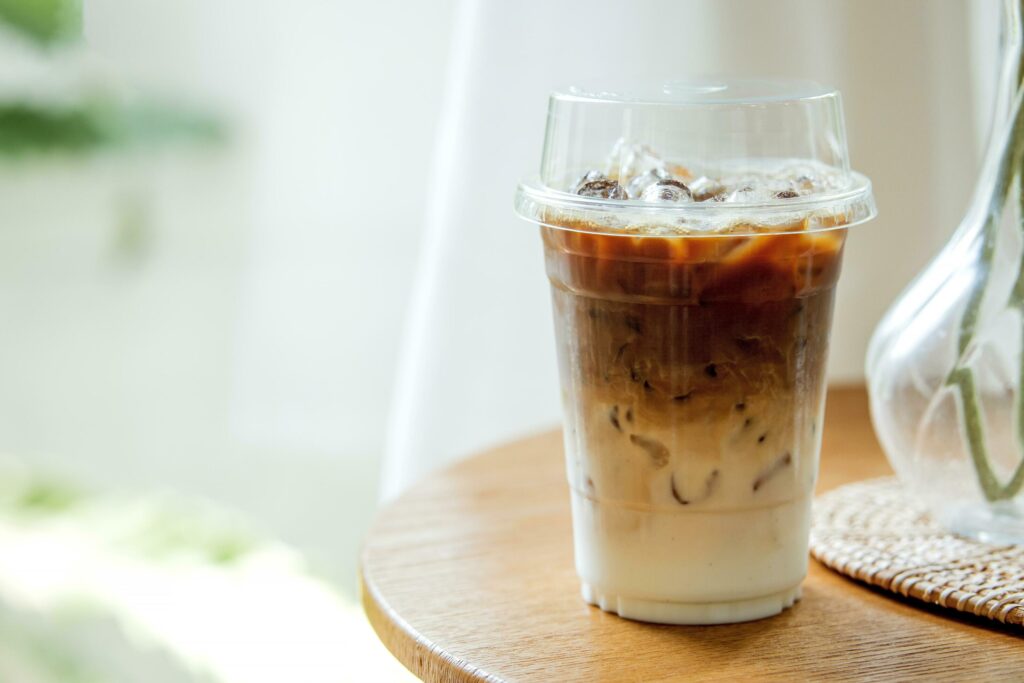
An iced cappuccino offers a cool twist on the classic drink.
It’s served cold over ice, making it a refreshing choice for warm days or those who prefer chilled coffee beverages.
Despite the temperature change, you get the same caffeine boost as a regular cappuccino.
- Caffeine Content: Approximately 80 mg per standard serving.
5. Decaf Cappuccino
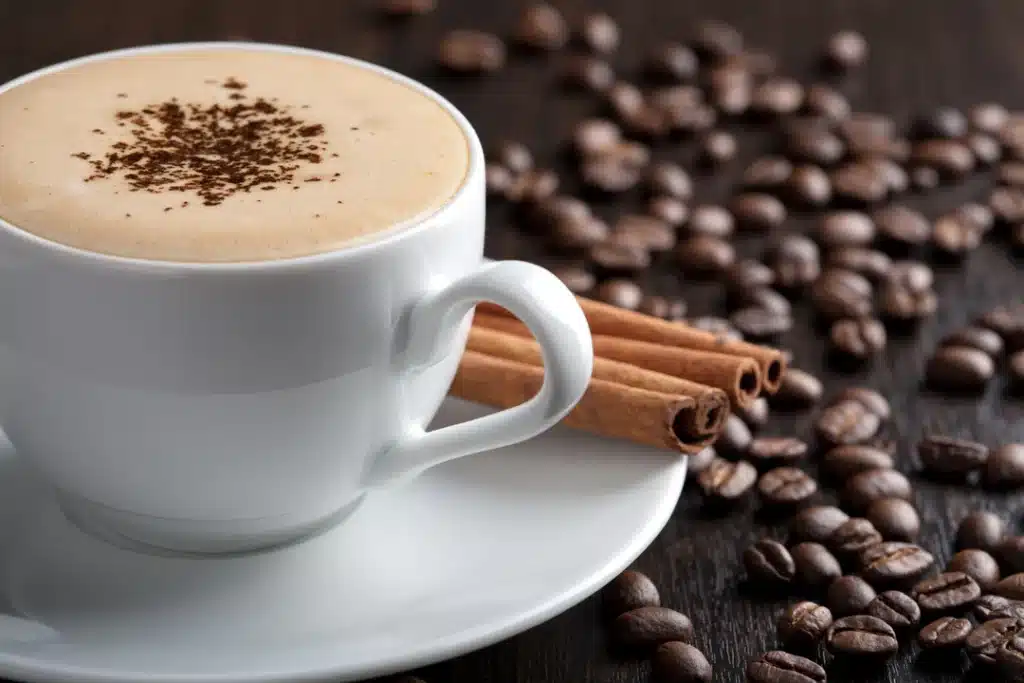
For those who love the taste of cappuccino but want to avoid caffeine, decaf versions are available. These are made with decaffeinated espresso beans, significantly reducing the caffeine content.
This allows you to enjoy the rich flavor and creamy texture of a cappuccino without the stimulating effects of caffeine.
- Caffeine Content: Approximately 3 to 15 mg per shot.
6. Cappuccino con Panna
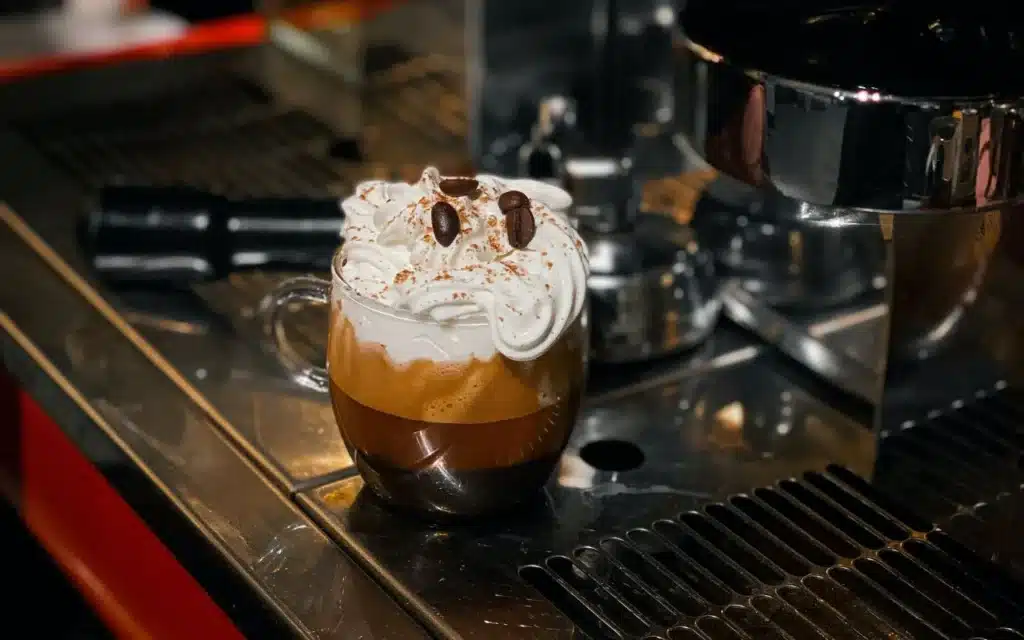
This indulgent variant replaces the traditional milk foam with a dollop of whipped cream.
It’s a great option if you’re in the mood for a dessert-like coffee drink without altering your caffeine intake.
- Caffeine Content: Approximately 80 mg per standard serving.
7. Double or Triple Shot Cappuccino
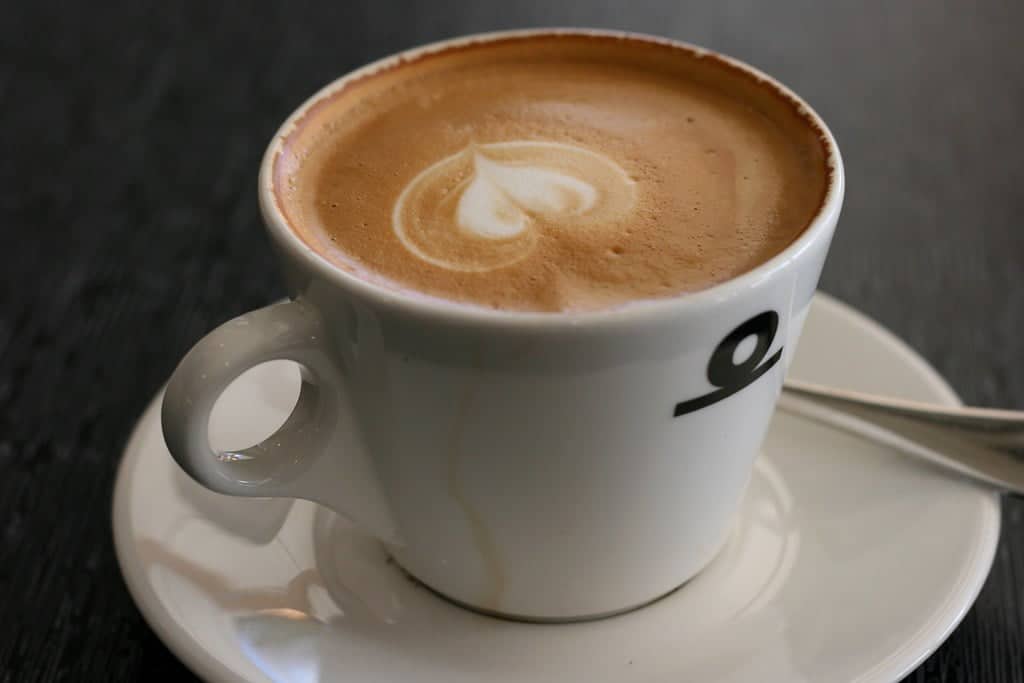
You can opt for a double or triple-shot cappuccino for a stronger caffeine kick.
These variants are perfect for those needing an extra energy boost or prefer a more intense coffee flavor.
Remember, with great power comes great responsibility – be mindful of caffeine intake when choosing these stronger options.
- Caffeine Content: Approximately 160 mg for double shot, higher for triple shot.
Cappuccino- Nutritional Information
Typical Nutritional Profile for a 16 fl oz Cappuccino
| Nutrient | Amount per Serving (16 fl oz) | % Daily Value (DV) |
|---|---|---|
| Calories | ~120 kcal | – |
| Total Fat | 4.6 g | 6% |
| Saturated Fat | 2.9 g | 14% |
| Trans Fat | 0.2 g | – |
| Polyunsaturated Fat | 0.2 g | – |
| Monounsaturated Fat | 1.3 g | – |
| Cholesterol | 18 mg | 6% |
| Sodium | 116 mg | 5% |
| Total Carbohydrates | 12 g | 4% |
| Dietary Fiber | 0 g | 0% |
| Sugars | 12 g | – |
| Protein | 7.6 g | – |
| Vitamin D | 2.7 mcg | 14% |
| Calcium | 276 mg | 21% |
| Iron | 0.1 mg | 1% |
| Potassium | 388.3 mg | 8% |
| Caffeine | 125.5 mg | – |
Caffeine-Free Coffee Beverages
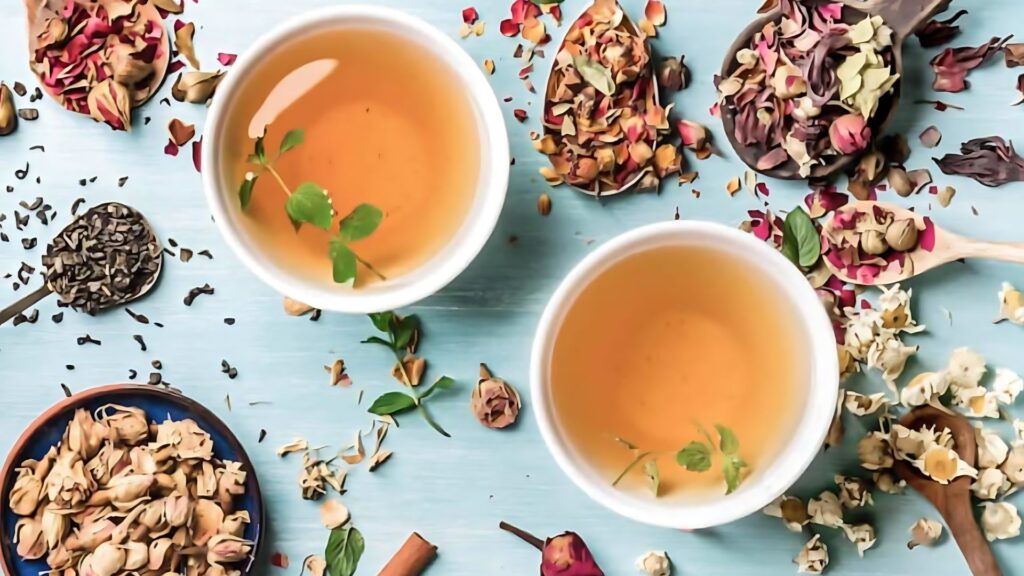
For those who love the taste of coffee but want to avoid caffeine, there are several delicious alternatives available:
1. Decaf Coffee
Decaf coffee is a great option for coffee lovers looking to reduce their caffeine intake. It’s made from coffee beans that have had most of their caffeine removed.
While not completely caffeine-free, decaf coffee contains only about 2-3 mg of caffeine per cup.
This minimal amount allows you to enjoy the rich flavor of coffee without the stimulating effects of caffeine.
2. Herbal Coffee Alternatives
One popular caffeine-free alternative is chicory root.
This plant root can be roasted, ground, and brewed like coffee beans. It offers a rich, slightly nutty flavor that many find similar to coffee.
The best part? It’s completely caffeine-free. Chicory root can be enjoyed alone or mixed with regular coffee to reduce overall caffeine content while maintaining a full-bodied taste.
3. Caffeine-Free Specialty Drinks
If you’re looking for something completely different, there are many caffeine-free options to explore:
- Carbonated waters: Seltzer water, tonic water, club soda, and sparkling water are refreshing, caffeine-free options. They can be enjoyed plain or flavored for a bubbly treat.
- Herbal tea lattes: Many coffee shops now offer specialty lattes made with herbal teas instead of espresso. These can mimic the creamy texture of a cappuccino without any caffeine.
- Chicory lattes: Some cafes now offer lattes made with brewed chicory root instead of espresso, providing a coffee-like experience without caffeine.
Conclusion
As we wrap up our journey through the world of cappuccinos, it’s clear that this beloved coffee drink offers more than just a tasty treat.
Whether you’re seeking a strong caffeine kick or a milder coffee experience, a cappuccino variant suits your needs.
From traditional recipes to decaf options, the versatility of cappuccinos allows for personalization without sacrificing flavor.
Remember, the caffeine content in your cappuccino depends on various factors, including the number of espresso shots, the type of beans used, and the brewing method.
By understanding these elements, you can make informed choices about your coffee consumption.
So, the next time you order a cappuccino, take a moment to appreciate the craft behind your cup.
If you want to reduce your caffeine intake, remember the delicious alternatives we’ve explored.
Happy sipping!




